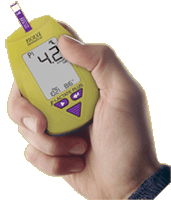Self Classification:
I am a person that runs at least 5 to 7 days per week year round and have kept pretty good general fitness (not necessarily peak fitness) for several years. I tend to be a pretty ambitious person that will stick to a schedule if I get one... which I have found to be a flaw to some degree. I realize not all people run year round and may take a little longer to get into good racing fitness, but I would imagine my information could be helpful to someone with a similar lifestyle.
Injuries/Ailments:
I don't get too many injuries surprisingly, but it's typically a form of tendinitis on the medial part of my right knee. There were a couple bad muscle strains in there, some lower back pain after a couple races, and a neuroma in my foot but nothing so serious that it puts me out for a super long amount of time. Sometimes I will work my way into some over-training about 3 or 4 weeks into a training cycle because I get too ambitious.
Races, Results, and General Training Observations Over 10 Years
I highlighted some of the races that I thought stood out in terms of what I did right in training, what I did wrong, or just generally thought was a surprising result. Here it is:
Half/Full Marathons Trained for Result Avg MPW
Lewis and Clark Half Marathon '06 1:17:18 (3rd) 80
2 wo's/week/20wks
2 wo's/week/20wks
St. Louis Marathon '07 2:42:16 (8th Place) 90
2 wo's/week/20 wks
2 wo's/week/20 wks
P.F. Chang's Half '08 1:19:31 95 to 100
Felt tired with most workouts
Felt tired with most workouts
Twin Cities '08 DNF calf strain 95 to 110
Dead after 25wks of tough workouts
Dead after 25wks of tough workouts
St. Louis Marathon '09 2:49:37 (11th) 50
Longest run 13mi, no long workouts
Longest run 13mi, no long workouts
Gobbler Grind '09 1:17:44 (3rd) 80
not many workouts
not many workouts
Boston Marathon '10 2:39:27 PR (199th) 80
8 weeks training
8 weeks training
Montreal Marathon '10 DNF hamstring strain 70
not many long runs
not many long runs
Gobbler Grind '10 1:18:21 60
6 weeks training
6 weeks training
Twin Cities '11 2:40:49 80 to 85
not many wo's
not many wo's
P.F. Chang's '12 2:40:00 90
2 wo's/week
2 wo's/week
KC Half '12 1:19:51 80
no workouts
no workouts
P.F. Chang's Half '13 1:15:56 PR 80
Easier workouts but longer tempo runs
Easier workouts but longer tempo runs
San Diego Mara '13 2:46:21 85 to 90
Lots of good wo's and a 4mi PR
Lots of good wo's and a 4mi PR
NYC Marathon '13 3:38:02 60
Very few long runs, harder workouts but not prepared for a full marathon
Very few long runs, harder workouts but not prepared for a full marathon
Boston Marathon '14 2:46:00 50
Only 5 wks training
CIM '14 ?:?? strained back 80
Good training, bad race, walked the last 8 miles
Rock the Pkwy '15 1:17:29 75
2 wo's/week, had bronchitis or possible pneumonia?
RnR STL '15 1:23:05 85 to 90
3 wo's/wk, Felt really tired
CIM '15 2:54:49 50
Very tired, Fatigue lasted several weeks even with rest
Omaha '16 1:23:40 70
No workouts, base running only with longest run of only 11 miles
Only 5 wks training
CIM '14 ?:?? strained back 80
Good training, bad race, walked the last 8 miles
Rock the Pkwy '15 1:17:29 75
2 wo's/week, had bronchitis or possible pneumonia?
RnR STL '15 1:23:05 85 to 90
3 wo's/wk, Felt really tired
CIM '15 2:54:49 50
Very tired, Fatigue lasted several weeks even with rest
Omaha '16 1:23:40 70
No workouts, base running only with longest run of only 11 miles
Takeaways From the Highlighted Races
Looking at 5 of these races, I realize that I ran pretty well off of just a few races or very low key workouts throughout some training cycles. Here are the takeaways:
- My marathon best was done off of only 8 weeks of hard workouts because I had a neuroma in my foot.
- Had a decent Boston marathon in 2014 with only 5 weeks of training and a couple long runs.
- Typically do well with roughly 80 miles per week.
- More than 2 workouts per week makes me tired.
- Don't skip the long runs (seems like a no brainer).
- 25 weeks is a really long time to do hard workouts.
- Medium workouts and only a few tougher workouts tend to suit me well.
How Can This Help You?
Take a look at some of your better races and determine what they had in common during your training stint. Obviously it will take several races over a long period of time, but logging mileage, taking notes on general week to week feelings, and recording the end result can show quite a bit over time and it will save you a ton of time, injuries, and exhaustion in training for your next event.









